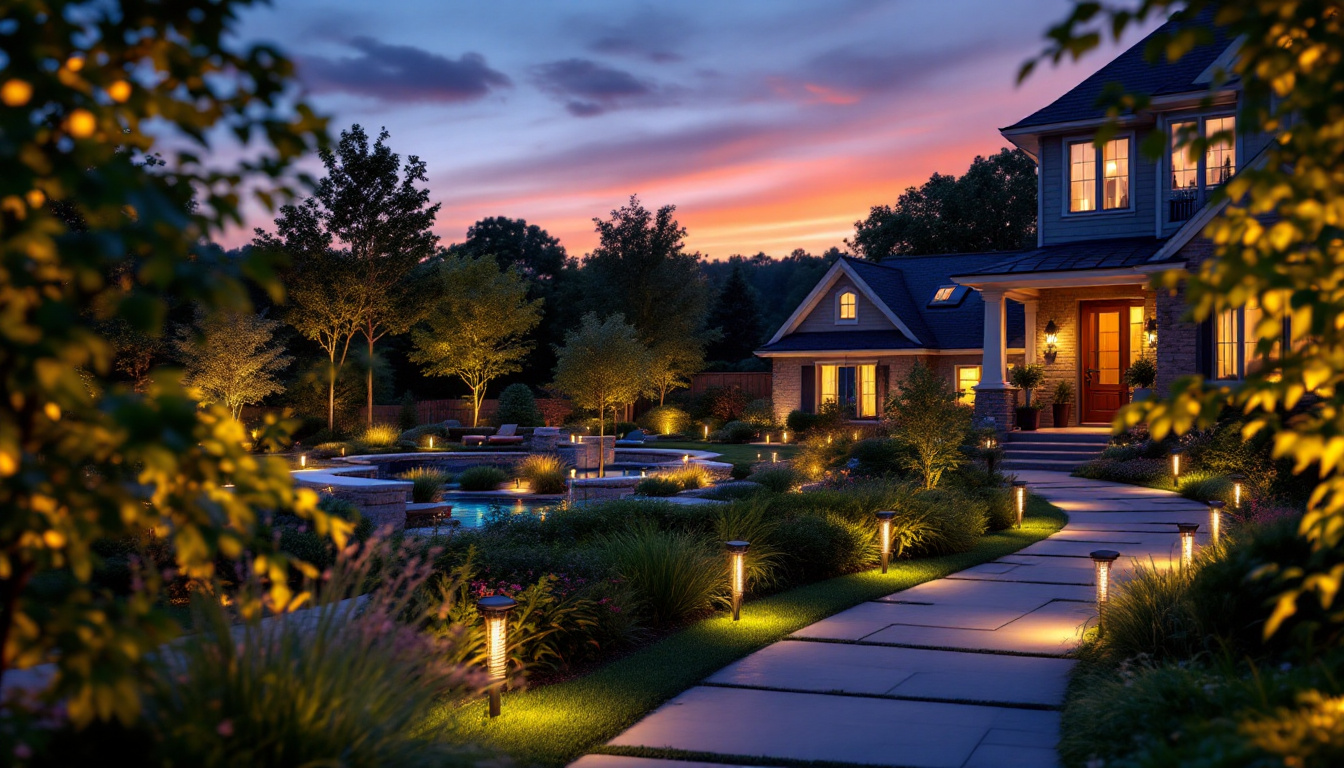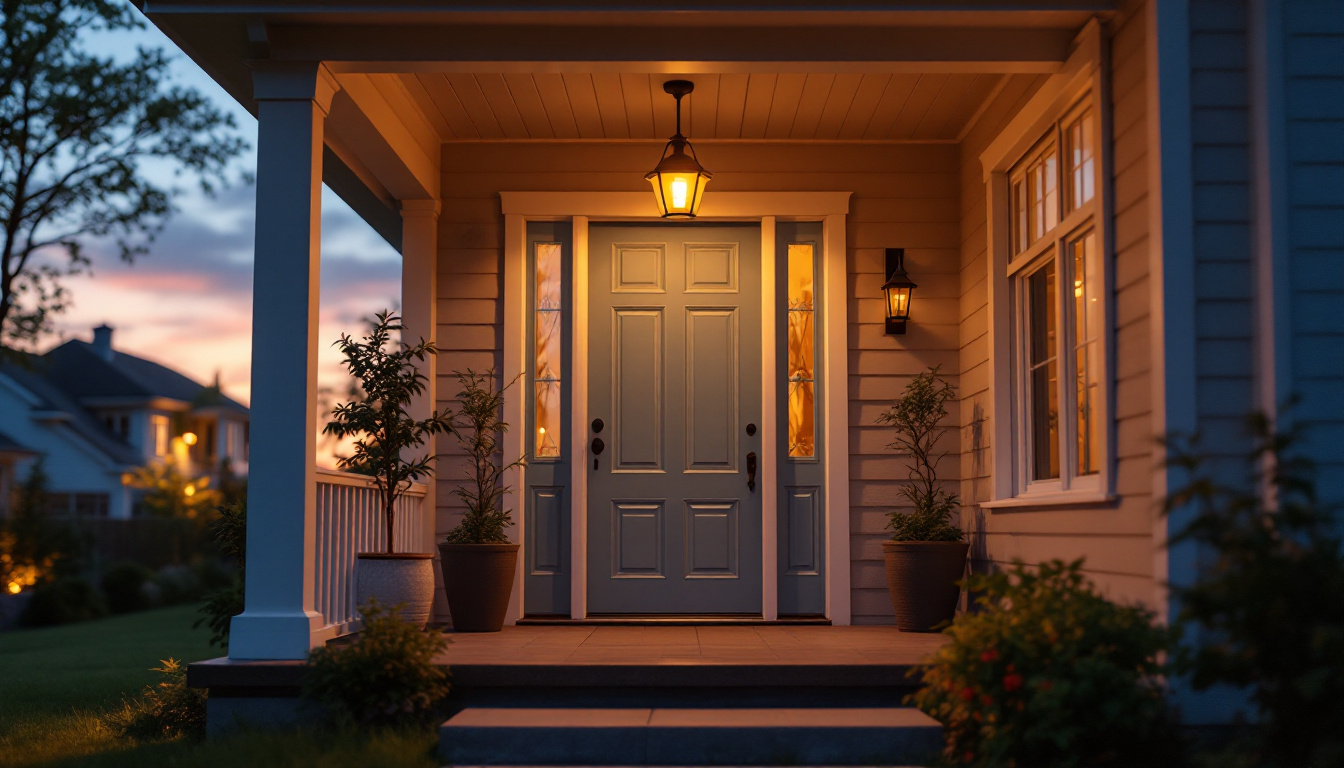
In recent years, the lighting industry has witnessed a significant transformation, particularly in the realm of landscape lighting. Among the innovations leading this change is solar lighting, which has emerged as a game-changer for both residential and commercial applications. This article explores the advantages of landscape solar lighting, its technological advancements, and why it is becoming the preferred choice for lighting contractors.
Landscape solar lighting offers numerous benefits that make it an attractive option for both contractors and clients. These advantages extend beyond mere aesthetics, impacting functionality, cost, and environmental considerations.
One of the most compelling reasons to consider solar lighting is its cost-effectiveness. Traditional landscape lighting systems often require extensive wiring and installation, which can drive up labor costs. In contrast, solar lights are typically easy to install, requiring minimal groundwork. This not only reduces the initial investment but also lowers maintenance costs over time.
Moreover, solar lights harness energy from the sun, eliminating the need for electricity. This can lead to substantial savings on energy bills, making solar lighting a financially savvy choice for homeowners and businesses alike. In addition to the direct savings on energy costs, many local governments and utilities offer incentives or rebates for installing solar-powered systems, further enhancing the financial appeal of these solutions.
In an era where sustainability is paramount, solar lighting stands out as an eco-friendly solution. By utilizing renewable energy, solar lights help reduce carbon footprints and reliance on fossil fuels. This aligns with the growing demand for green solutions in landscaping and outdoor design.
Furthermore, many solar lights are made from recyclable materials, enhancing their sustainability credentials. For contractors, promoting solar lighting can also attract environmentally conscious clients who prioritize green practices in their projects. The use of solar lighting can also contribute to LEED (Leadership in Energy and Environmental Design) certification for buildings, making it an attractive option for commercial projects aiming for sustainability recognition.
Landscape solar lighting comes in a variety of styles, shapes, and sizes, allowing for creative flexibility in design. From pathway lights to spotlights and decorative fixtures, there is a solar option for virtually every outdoor space. This versatility enables contractors to cater to diverse aesthetic preferences and functional needs.
Additionally, advancements in solar technology have led to improved designs that blend seamlessly with outdoor environments. Many modern solar lights feature sleek designs and adjustable settings, making them suitable for various landscaping themes. Some models even come equipped with motion sensors and dimming capabilities, allowing for enhanced security and energy efficiency. This adaptability not only meets the practical needs of homeowners but also enhances the overall ambiance of outdoor spaces, creating inviting environments for gatherings and events.
The evolution of solar lighting technology has significantly enhanced the performance and reliability of these systems. As a result, contractors can now offer clients solutions that are not only aesthetically pleasing but also highly functional.
Modern solar lights are equipped with advanced solar panels that capture sunlight more efficiently. These panels can convert a higher percentage of sunlight into usable energy, allowing the lights to operate longer and brighter. This improvement is particularly beneficial in regions with variable sunlight, ensuring that solar lights perform consistently throughout the year.
Moreover, some solar lights now feature dual solar panels, which can capture sunlight from different angles. This innovation maximizes energy absorption, further enhancing the lights’ performance and reliability. The incorporation of bifacial solar panels, which utilize both sides to harness sunlight, has also emerged, allowing for even greater energy efficiency. This means that even in partially shaded areas, solar lights can still function effectively, making them suitable for a wider range of environments.
The integration of smart technology into solar lighting systems is another significant advancement. Many new solar lights come with features such as motion sensors, timers, and remote control capabilities. These features allow for greater control over lighting, enabling users to customize their outdoor spaces according to their needs.
For contractors, offering smart solar lighting solutions can set them apart from competitors. Clients are increasingly looking for convenience and efficiency, and smart solar lights provide both, making them an attractive option for modern landscaping projects. Furthermore, the ability to integrate these lights with home automation systems means that users can control their outdoor lighting from their smartphones or through voice commands, adding an extra layer of convenience. This connectivity not only enhances user experience but also opens up possibilities for energy savings, as lights can be programmed to turn off during daylight hours or dim when not needed.
Durability is a critical factor when selecting landscape lighting, and solar lights have made significant strides in this area. Many contemporary solar lights are designed to withstand various weather conditions, including rain, snow, and extreme temperatures. This resilience ensures that the lights remain functional and visually appealing over time.
Additionally, many solar lights now feature robust materials, such as high-quality plastics and metals, that resist rust and corrosion. This durability not only enhances the lifespan of the lights but also reduces the need for frequent replacements, making them a wise investment for contractors and clients alike. To further enhance their longevity, some manufacturers are now incorporating UV-resistant coatings to protect against sun damage, ensuring that colors remain vibrant and materials do not degrade over time. This focus on longevity and resilience reflects a growing awareness of sustainability in the industry, as longer-lasting products contribute to reduced waste and a smaller environmental footprint.
While solar lighting presents numerous advantages, understanding the installation and maintenance aspects is crucial for lighting contractors. Proper installation and upkeep can significantly impact the performance and longevity of solar lights.
Installing solar lights is generally straightforward, but there are best practices that contractors should follow to ensure optimal performance. First, it is essential to place solar lights in locations that receive ample sunlight throughout the day. Shaded areas can limit the energy absorbed by the solar panels, reducing the lights’ effectiveness.
Contractors should also consider the positioning of the lights to achieve the desired lighting effect. For instance, pathway lights should be spaced evenly to provide adequate illumination, while spotlights should be directed towards focal points in the landscape.
Although solar lights require minimal maintenance compared to traditional lighting systems, some care is necessary to keep them functioning optimally. Regularly cleaning the solar panels is crucial, as dirt and debris can obstruct sunlight and reduce energy absorption. A simple wipe with a damp cloth can often suffice.
Additionally, contractors should advise clients to check the batteries periodically. Over time, batteries may lose their capacity to hold a charge, necessitating replacement. Encouraging clients to invest in high-quality batteries can enhance the performance and lifespan of their solar lighting systems.
The landscape solar lighting market is evolving rapidly, driven by technological advancements and changing consumer preferences. Understanding these trends can help contractors stay ahead of the curve and meet the demands of their clients.
As awareness of energy conservation continues to grow, more consumers are seeking energy-efficient lighting solutions. Solar lighting, with its ability to harness renewable energy, is well-positioned to meet this demand. Contractors who embrace solar technology can appeal to a broader client base, from environmentally conscious homeowners to businesses looking to reduce their energy costs.
This trend is likely to continue as more individuals and organizations prioritize sustainability in their purchasing decisions. By offering solar lighting options, contractors can align themselves with this growing movement and enhance their marketability.
The landscape lighting industry is witnessing a surge in innovation, particularly in design and functionality. Manufacturers are continually developing new products that incorporate advanced features, such as color-changing LEDs and smart home compatibility. These innovations not only enhance the aesthetic appeal of solar lighting but also improve its functionality.
Contractors should stay informed about the latest product releases and technological advancements to provide clients with the most up-to-date options. By doing so, they can position themselves as industry leaders and trusted advisors in landscape lighting solutions.
Despite the many advantages of solar lighting, there are challenges that contractors must navigate. For instance, the initial cost of high-quality solar lights can be a barrier for some clients. Educating clients about the long-term savings and benefits can help overcome this hurdle.
Additionally, the performance of solar lights can be influenced by geographic location and climate. Contractors should assess the specific needs of each project and recommend appropriate products that will perform well in the given environment.
Landscape solar lighting is undeniably a game-changer for the lighting industry, offering a range of benefits that appeal to both contractors and clients. Its cost-effectiveness, environmental impact, and technological advancements make it an attractive option for modern landscaping projects.
As the demand for energy-efficient and sustainable solutions continues to rise, contractors who embrace solar lighting will find themselves well-positioned to meet the needs of their clients. By staying informed about market trends and innovations, lighting contractors can enhance their offerings and remain competitive in an evolving industry.
In conclusion, investing in landscape solar lighting is not just a trend; it is a strategic move that can lead to long-term success in the lighting industry. Embracing this technology will not only benefit contractors but also contribute to a more sustainable future for outdoor lighting.
Ready to transform your landscape lighting projects with the most efficient, sustainable, and cost-effective solutions? Look no further than LumenWholesale, where we provide contractors with the highest quality solar lighting options at unbeatable wholesale prices. Our spec-grade products are designed to meet the highest industry standards, ensuring that you deliver reliability and high performance to every client. Take advantage of our hassle-free bulk buying and free shipping to get premium lighting at the best value. Elevate your lighting game and contribute to a greener future with LumenWholesale. Wholesale Lighting at the Best Value.

Discover the top strategies lighting contractors use when selecting and installing B type light bulbs.

Discover expert insights and top resources from lighting contractors to master the art of front porch illumination.

Discover why 8′ LED light fixtures are essential for any successful lighting project.

Discover why staying updated on LED wall pack technology is crucial for lighting contractors.